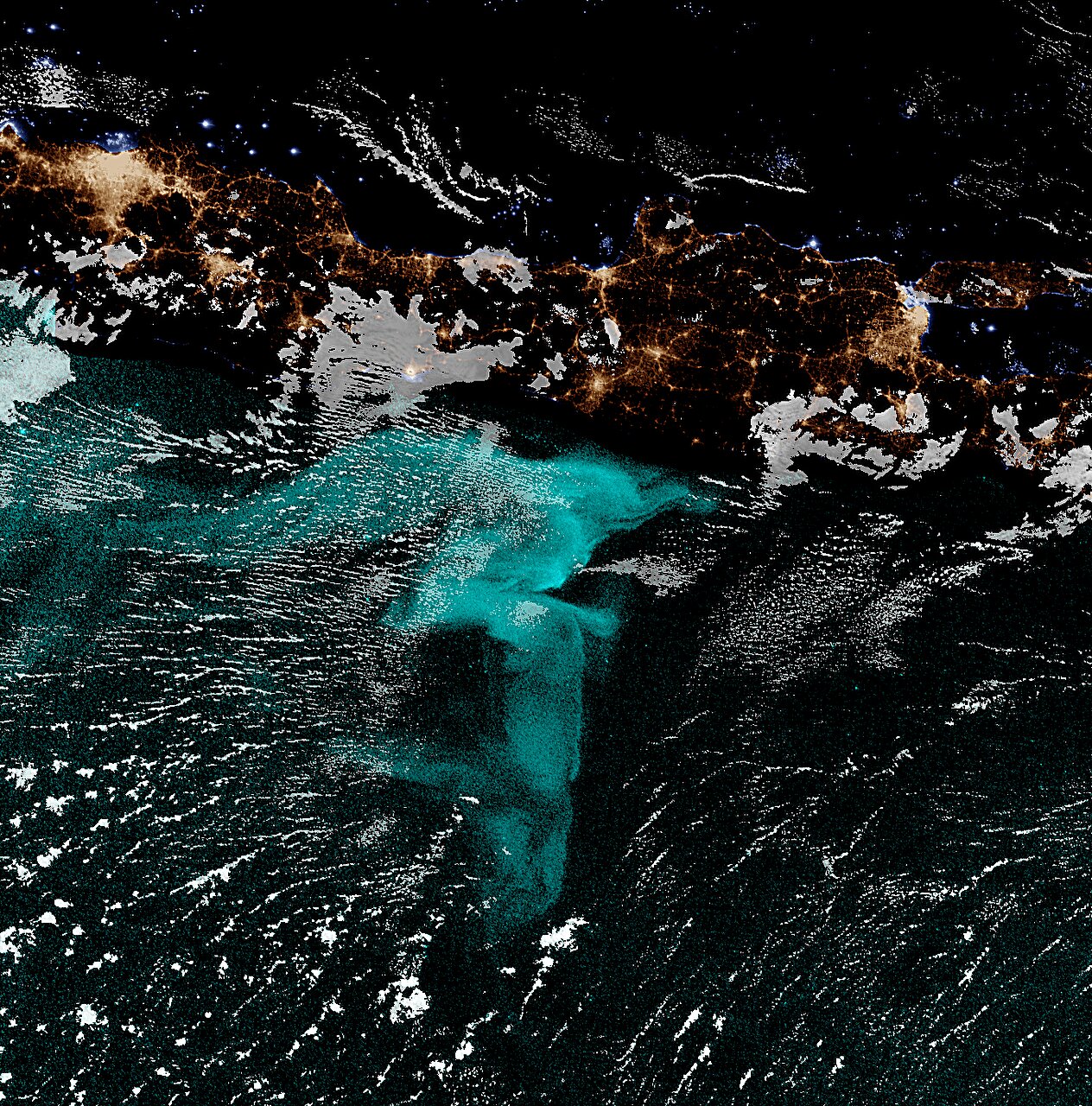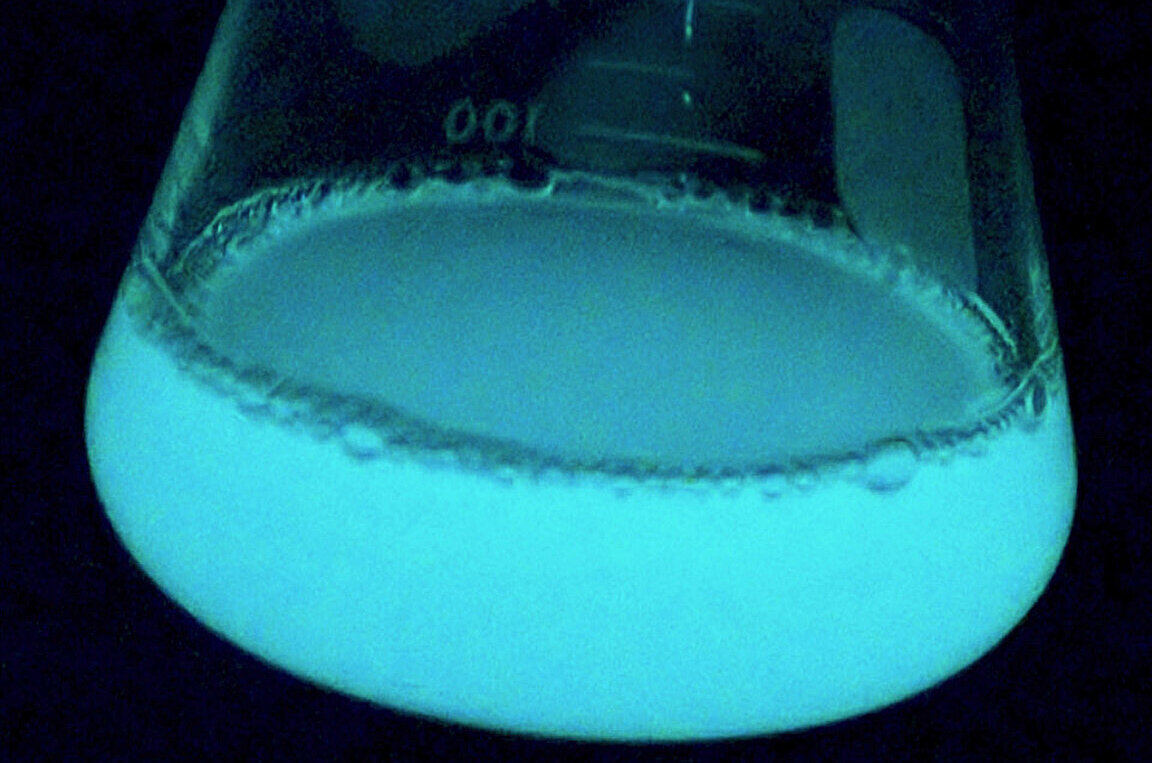
For many years, mariners worldwide have recounted an enigmatic occurrence: large expanses of the sea emit a consistent luminescence throughout the nights, often lasting several months. This radiance is sufficiently intense to permit reading and eerily resembles the greenish-white shimmer emitted by those familiar glow-in-the-dark celestial stickers found in kids' bedrooms. Covering maritime zones as vast as 100,000 square kilometers, this illumination can occasionally be spotted from outer space itself.

This spectacular bioluminescence phenomenon has been dubbed "milky seas" by mariners. Although observed over many years, experts remain largely ignorant regarding its exact cause due to their infrequent occurrence—these events typically happen in isolated parts of the Indian Ocean where few people venture. One plausible hypothesis suggests that the light emanates from an abundance of luminescent microorganisms known as Vibrio harveyi.
To improve predictions about when milky seas might happen, scientists at Colorado State University have assembled a database documenting observations from the past four centuries.
Described in the journal Earth and Space Science , the archive incorporates firsthand testimonies from crew members, personal narratives sent to the Marine Observer Journal across an 80-year span, along with recent satellite information.
This marks the first compilation of such data on milky seas in three decades. Collectively, these findings indicate that observations typically occur in the vicinity of the Arabian Sea and the waters off Southeast Asia, and they are statistically linked to both the Indian Ocean Dipole and the El Niño Southern Oscillation.
These two climatic events are recognized for their influence on worldwide weather conditions, leading scientists to ponder the potential connection between this spectacular occurrence and those processes.
Justin Hudson, a doctoral candidate and lead author of the study, mentioned that this database will assist scientists in more accurately predicting the timing and location of milky seas. His objective is to deploy a research ship to these sites promptly so they can gather data on both the biological and chemical aspects present during such an occurrence. Understanding these factors might aid in linking these events to larger activities within the Earth’s systems.
Hudson further noted that areas where milky seas appear exhibit significant biodiversity and hold considerable economic importance for fisheries.
“It’s extremely difficult to examine something when you lack relevant data,” Hudson stated. “Up until now, there has been just one verified photo taken at sea level, which was captured during an unexpected meeting with a sailboat back in 2019. Consequently, many aspects remain mysterious regarding the occurrence of this phenomenon, including its causes and effects on regions affected by it.”
What exactly are milky seas, and what causes them to appear?
Bioluminescence manifests in numerous ways throughout nature. A widely recognized instance is the flashing glow emitted by fireflies. However, when it comes to phenomena like milky seas, scientists are still working to comprehend the exact occurrences taking place above the ocean’s surface.
A clue emerged from a research ship’s unexpected meeting with a milky sea back in 1985, during which they managed to obtain a water sample. The investigation revealed that a particular type of luminescent bacterium inhabited the exterior of algae inside the bloom, potentially resulting in the consistent radiance emitted in every direction.
Nevertheless, this is merely a single data point and might lead to misinterpretation. To fill the knowledge gap, scientists have attempted to utilize insights derived from occasional satellite images.
Hudson stated that considering the areas predominantly linked to this occurrence, it appears probable that the illumination stems from a biological mechanism connected to certain bacteria.
"The regions where this happens the most are around the northwest Indian Ocean near Somalia and Socotra, Yemen, with nearly 60% of all known events occurring there. At the same time, we know the Indian monsoon's phases drive biological activity in the region through changes in wind patterns and currents," he said.
It appears plausible that milky seas might be an under-researched component of the extensive transfer of carbon and nutrients within the Earth’s systems. This notion becomes increasingly probable as our knowledge expands regarding how bacteria significantly influence the worldwide carbon cycle, whether on terrestrial or marine terrains.
Professor Steven Miller, who has been studying milky seas for many years at Colorado State University (CSU), is the co-author of this paper. His work includes leading initiatives to capture images of the phenomenon using satellite technology. He believes that the newly created database will offer unprecedented chances to gain direct insights into these occurrences.
"Milky seas are remarkable manifestations of our biosphere, and their full significance in nature remains undetermined," Miller stated.
Their presence highlights undiscovered links between the earth’s surface and the atmosphere, as well as the role of bacteria from tiny cellular levels to vast planetary scales within the Earth's systems. By utilizing this newly created database—which spans from vessels during the age of sail in the 17th century up to contemporary spacecraft—we start constructing a pathway from traditional beliefs toward scientific comprehension.
The document reflects a segment of Hudson's investigation at Colorado State University within the Division of Atmospheric Science as he prepares to complete and defend his thesis on the topic this coming summer. He expressed hope that the database would enhance our comprehension of the phenomenon.
We have absolutely no clue about the significance of milky seas for the ecosystems where they occur," he stated. "These phenomena might signal either a thriving environment or a troubled one—since the bacteria thought to cause them are recognized pests that can adversely affect fish and crustaceans.
Having this information readily available enables us to start addressing queries regarding milky seas without merely relying on the chance of a vessel stumbling upon one unintentionally.
More information: From Seafarers to Satellites: A Curated Database of Bioluminescent Milky Seas Covering 1600 to Present Day Earth and Space Science (2025). DOI: 10.1029/2024EA004082
Furnished by Colorado State University
The tale was initially released on Massima . Subscribe to our newsletter For the most recent science and technology news updates.